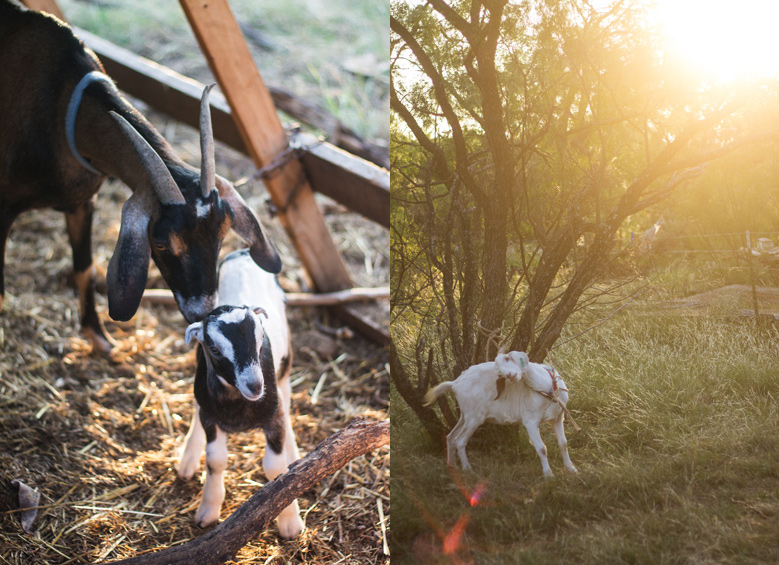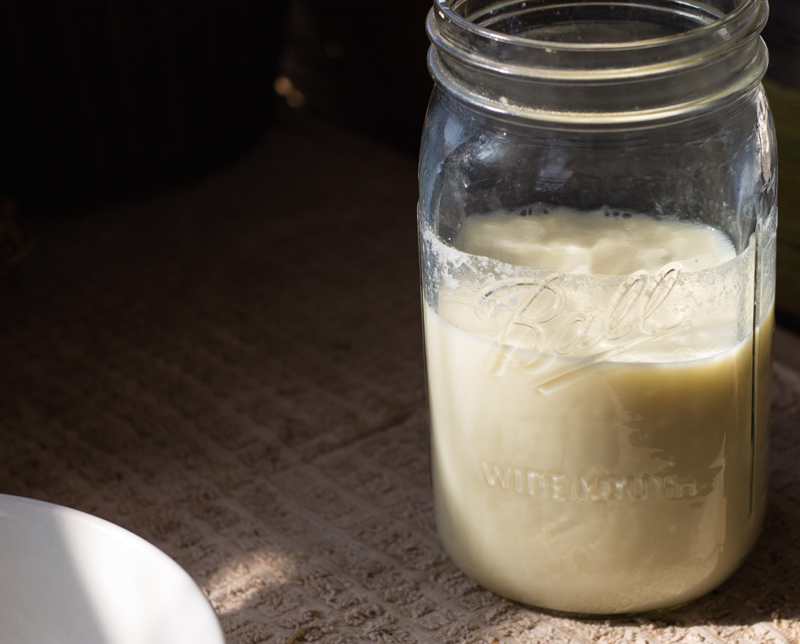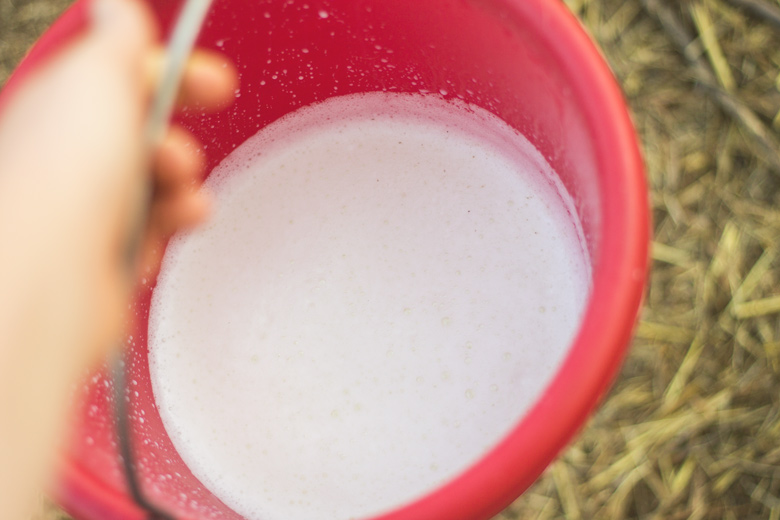Dairy Animals – The Heart of the Homestead

I am happy to bring you this guest post from author Kate Downham from The Nourishing Hearth Fire. Kate has a new book all about Backyard Dairy Goats that will help you with every aspect of raising goats naturally. From feeding and care to recipes and information on using all of that goat milk goodness. In this article she reiterates many of our own thoughts and experiences with home dairying and the vital role it has on a homestead. Enjoy!
We all need calories and nourishment. The garden needs fertility. Home dairying provides food and fertility, forming a beautiful cycle as my goats eat the plants, manuring the soil, which grows more plants to provide for the goats, while we harvest the milk, and shovel manure into the garden.
I watch the soil grow and the garden improve from year to year, that lifeless-looking grey, cracked dirt we began with is now supporting earthworms and smelling of life. Every bucket of goat manure I add to the garden grows new life in the soil and plants. In moments of quiet observation I am aware of how the goats are providing nourishment for an entire ecosystem – not just their milk, which fuels us to work on even more soil-building homestead projects, but with their manure as it grows plants for us and for them.

We began our homestead with goats. We’d been keeping them in the yards of rental houses as we prepared to move into our off-grid home. We moved to our land with no garden, no fences, no infrastructure, yet from our first day onward we were provided with nourishing raw milk.
Goats have been at the heart of our homestead ever since. They range free around our land, manuring the soil, gobbling up the scrub I am slowly clearing into silvopasture. Every morning, no matter what crazy teething troubles our off-grid systems are having, we have fresh milk to drink, and are growing the soil.
Home dairying is a life of rhythms. Our days are interspersed with milking chores – a quiet, gentle way to receive food, and a slow time for observation, reflection, and a feeling of satisfaction as I watch our source of nourishment fill up the bucket and milk jars. The action and noise of the milk flowing into the bucket has a rhythm to it. The seasonal ebb and flow of milk supply, as we eagerly await the abundance in spring and a return to cheesemaking, followed by a summer and autumn filled with dairy and cheese, before the quieter days of winter, where we eat our stored cheeses, and the cycle begins again.
Some people can be put off by the idea of rhythm and routine in life, but I delight in this part of dairying. When it feels as though the water supply, garden, electricity, and other parts of the homestead seem to be going wrong – and all at once sometimes – it is nourishing to be in the company of dairy animals, and to have a small, steady, non-exhausting amount of chores that need to be done everyday to receive our staple source of food.

The art of making cheese is one that can bring a lot of joy and focus to homestead life, as we transform a simple food like milk, with the addition of some kefir and rennet, into a hard cheese that we eat in winter, or a soft, spreadable cheese to be eaten right away. As our herd of goats grows and I prepare the land for cows, I dream of a straw bale cheese cave with wooden shelves, filled with enough cheese to last our family all winter and spring, when hard cheese is most appreciated.
In summer and autumn we have an abundance of milk, more for us to use at times, and we raise pigs for meat and lard. The pigs seem to thrive on the whey leftover from cheesemaking, along with soured milk, some foraged acorns, and whatever else we can find for them. Chickens can also eat the excess dairy, but the cycle of raising pigs in autumn seems to coincide so well with the milk cycle of dairy goats that it feels as though we are putting pieces in a puzzle towards creating a beautiful, thriving, soil-growing homestead.
If I were starting a new homestead from scratch again, my first consideration would be dairy animals, and where they can fit in. They truly are the heart of my homestead, and I just can not imagine life on the land without them.
You can find all of the details of how Kate keeps healthy goats in her book:

